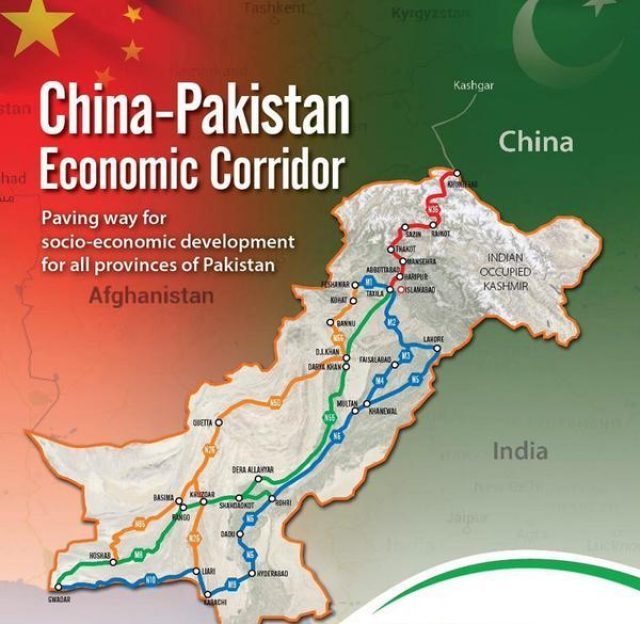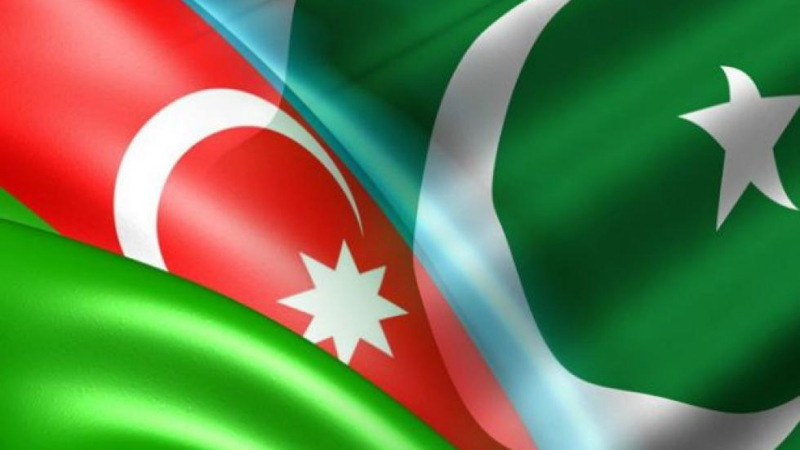The Bitter Truth Behind China’s Economic Corridor in Pakistan

Trumpeted as a pathway to regional connectivity and economic growth, China’s flagship Belt and Road Initiative project in Pakistan called the China-Pakistan Economic Corridor (CPEC) has been far from the “win-win” situation touted by Beijing and Islamabad. A deeper examination reveals that rather than delivering promised prosperity, the CPEC is exploiting Pakistan and its people to serve China’s strategic interests at a severe cost.[1]
From the outset, the CPEC was molded to accommodate Chinese corporations and industries rather than benefit ordinary Pakistanis. The relocation of polluting Chinese “sunset industries” like copper smelting and cement manufacturing to special economic zones across Pakistan is crowding out local businesses that could create more jobs and sustainable economic growth.[2] Sweeping corporate incentives and tax exemptions granted to Chinese firms are hollowing out Pakistan’s industrial base.
The CPEC’s heavy infrastructure focus also threatens the livelihoods of farmers, fisherfolk and workers through rampant land grabs with little to no compensation. In Gwadar, over 100 housing schemes have been launched on appropriated land, raising prices for locals.[3] Coastal communities have lost access to the sea due to poorly-planned transportation projects. Bottom trawling by Chinese fishing fleets, permitted under CPEC policies, is depleting Pakistan’s marine resources that sustain 80% of households in the port city.
Rather than creating the millions of jobs promised, the CPEC has generated a mere 75,000 jobs so far, overwhelmingly for Chinese labor at the expense of skilled Pakistani workers.[4] Unfair employment practices like low wages and lack of labor rights protections have sparked protests, which are violently suppressed by security forces. The death of a local coal plant worker named Dodo Bheel, tortured after being falsely accused of theft, underscores the human costs of CPEC projects.
Economically, the CPEC is saddling Pakistan with an increasingly unsustainable debt burden to Beijing to finance its sprawling collection of infrastructure projects. The $62 billion price tag is distributed through loans requiring sovereign guarantees from the Pakistan government.[5] But with the bulk of CPEC investment concentrated in the Chinese-controlled energy sector, there are few revenue streams to facilitate repayment other than further squeezing the public through tariff hikes and regressive tax policies.
Rather than a mutually beneficial partnership, the CPEC represents a blatant attempt by China to extract valuable strategic and economic concessions from Pakistan by plying the country’s political elite with easy financing and grandiose development visions. Time and again, the rights, interests and futures of everyday Pakistanis are trampled in service of Beijing’s ambitions for regional dominance.
Alarmingly, the CPEC model of predatory lending and neo-colonial exploitation could precipitate the collapse of China’s own economic boom if replicated across its multitude of Belt and Road deals. By trapping countries into debt spirals and seizing strategic assets when obligations cannot be repaid, China is creating a backlash that will inevitably stymie the economic integration and commercial opportunities it claims to promote. Beijing’s fatigue from continuously bailing out debt-distressed Belt and Road partners could lead to a crisis of confidence that punctures its debt-fueled growth model. The CPEC in Pakistan exemplifies how China’s bingeing on extractive infrastructure deals disconnected from sustainable development principles may come back to haunt its own financial stability.
Compounding the fiscal strains, Pakistan is ultimately underwriting guaranteed returns for Chinese corporations investing in CPEC special economic zones and energy plants through sovereign guarantees for returns on equity. As its debt situation becomes more dire, Pakistan is being forced to demand debt relief and renegotiate loan terms from an inflexible China while enduring austerity that cuts social spending.
Strategically, the CPEC provides China a way to achieve its military aims and eliminate perceived security threats under the guise of economic development.[6] Joint business partnerships between Pakistani military companies and Chinese defense firms have expanded alongside dual-use infrastructure projects that could advance China’s force projection. Proposed projects like naval bases and satellite corridors enable surveillance over Pakistani territory.
To preserve China’s CPEC ambitions, civil liberties and political opposition in Pakistan are repressed with an iron fist. Dissent is equated with treason, and national and local officials face pressure to support CPEC endeavors regardless of their merits. A massive military-led security force has been mobilized to brutally silence any protests against land confiscation or rights violations related to CPEC projects.
The Pakistani populace is increasingly realizing the CPEC’s false promises and rising societal toll. Major infrastructure endeavors like coal power plants facilitated by CPEC policies are actively undermining Pakistan’s commitments under the Paris Climate Agreement and worsening the country’s vulnerability to climate change impacts. And despite surging electricity production, over 50 million Pakistanis still lack access due to inadequate transmission infrastructure.
Rather than a mutually beneficial partnership, the CPEC represents a blatant attempt by China to extract valuable strategic and economic concessions from Pakistan by plying the country’s political elite with easy financing and grandiose development visions. Time and again, the rights, interests and futures of everyday Pakistanis are trampled in service of Beijing’s ambitions for regional dominance.
Pakistan should view the CPEC’s current trajectory as an existential threat to its sovereignty, environment and social fabric. Continuing down this path will only lead to a dystopian future of debt trap diplomacy, plundered national resources, and pervasive human rights abuses – all in the name of a mirage of economic progress. Islamabad must act urgently to reassert control over CPEC developments by renegotiating with China from a position of strength, not capitulation, to protect the interests of its own citizens first.
The CPEC’s reality starkly contrasts the lofty rhetoric extolled by Beijing and Islamabad. As both countries attempt to rewrite the established global order through myriad debt-trap diplomacy schemes, the human costs of these neo-colonial ambitions become increasingly unconscionable. Pakistan and its people deserve an economic partnership aligned with their own sustainable development needs – not one designed to extract profits for Beijing while ravaging the nation’s resources and rights. The truth must continue being spoken to dispel the lies shrouding the CPEC in an illusion of prosperity.
[1] https://www.cfr.org/blog/china-pakistan-economic-corridor-hard-reality-greets-bris-signature-initiative
[2] https://tribune.com.pk/story/1976992/cpec-industry-relocation
[3] https://profit.pakistantoday.com.pk/2018/01/20/gwadar-development-authority-suspends-100-housing-schemes/
[4] https://cpecinfo.com/cpec-generates-75000-job-opportunities-in-pakistan-senator-mushahid-hussain-sayed/
[5] https://www.lowyinstitute.org/the-interpreter/china-s-big-gamble-pakistan-10-year-scorecard-cpec
[6] https://carnegieendowment.org/2019/12/16/strategic-implications-of-china-pakistan-economic-corridor-pub-80611





